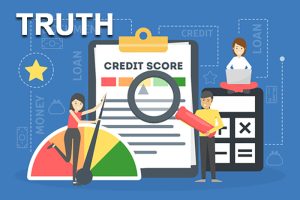So, your credit score’s been limping along like a phone on 1% battery—scary, right? What if I told you that in less than a year, you could transform that credit score from zero to hero?
Imagine applying for a loan and the bankers lining up at your door instead of chasing you away with pitchforks! It’s not only possible, it’s perfectly doable with the right moves.
This isn’t just about nudging up a few points. I’m talking about a complete credit makeover that’ll have credit bureaus practically serenading you.
Let’s roll up our sleeves and turn that credit frown upside down!
Understand The Beast: What Even Is A Credit Score?
Before we put on our boxing gloves, what are we even fighting?
Your credit score—a three-digit number lenders use to decide if you’re the Cinderella or stepsister of banking. It tells lenders how good you are at paying back money.
It ranges from 300 to 850. The higher your score, the shinier your financial rep.
High score? Banks throw loans at you like you’re a rock star catching flowers on stage.
Low score? It’s like being picked last in dodgeball—no fun at all.
Step 1. Pull Your Credit Report—Check For Errors
First off, snag a free report from each of the big three: Experian, Equifax, and TransUnion.
It’s your right, once a year, like a birthday present!
This is your financial x-ray and without it, you’re going in blind.
Whether it’s a debt you don’t recognize or a payment wrongly marked as late, these errors can be contested and corrected.
Whether it’s a debt you don’t recognize or a payment wrongly marked as late, these errors can be contested and corrected.
Scrutinize it for mistakes, from small typos to big errors like incorrect debts.
Dispute any inaccuracies to clear your name—yes, this can be a game changer!
Step 2. Reduce Your Credit Utilization
This fancy term just means the ratio of your credit card balances to their limits. High utilization scares lenders worse than a horror movie.
Here’s the inside scoop. Your credit utilization ratio (that’s credit speak for how much you owe divided by your credit limit) should be under 30%.
Pay down those balances, and maybe increase your limits (but don’t spend more!). It’s like losing weight for your credit score—trim those fat balances down!
Maxed out cards scream “risky” to lenders. Start paying down the highest interest cards first—it’s the fastest escape from debt jail.
Step 3. Always Pay On Time, Every Time
If your credit score could scream, it would howl every time you miss a payment.
Set up reminders, automate payments, do whatever it takes to pay those bills on time. Every missed payment is a black mark on your credit gown.
Set up reminders, automate payments, do whatever it takes to pay those bills on time. Every missed payment is a black mark on your credit gown.
Late payments are big no-nos and can knock over 100 points off your score.
Think of due dates as deadlines for a project that could cost you money and peace of mind if missed.
Step 4. Keep Old Accounts Open And Kicking
Got a credit card you don’t use much? Keep it open.
The age of your accounts can boost your score. It shows lenders you’ve got a long history of managing credit.
Sure, managing old credit lines can be a hassle, but think of them as vintage wine—they get better with age.
Step 5. Apply For New Credit Sparingly
Each time you apply for new credit, it dings your score slightly. Lenders think, “Desperate much?” if you’re always applying for new credit.
Space out your credit applications. Be strategic.
Apply only when necessary, and always shop around for the best rates.
Step 6. Consider Diverse Types Of Credit
Mix it up! Having a variety of credit types—like a mix of credit cards, a car loan, and a mortgage—can actually help your score.
It shows lenders you can handle different types of credit responsibly.
Just don’t overdo it. Too much borrowing can lead to trouble.
How Fast Can You See Improvement?
Here’s the real talk. Improvements can be seen in as little as 30 days, especially if you’re correcting errors.
For more significant changes, such as improving a deeply flawed score, give it anywhere from six months to a year.
Each action you take smooths out the kinks in your credit score, making it easier for lenders to love you. Consistency is your friend here.
And as your score climbs, you’ll find doors swinging open for you—from lower interest rates to better credit offers.
Can You Really Go from Zero To Hero?
Yes, and there’s no magic required—just good financial habits.
Start by cleaning up your credit report and then move on to smarter credit management with the steps above.
The climb might be gradual, but the view from a high credit score is worth it.
The climb might be gradual, but the view from a high credit score is worth it.
What If You Slip Up?
Nobody’s perfect. If you miss a payment or overuse your credit card, don’t panic—correct your course right away.
The worst thing to do is nothing. Remember, rebuilding credit is a journey, not a sprint.
Still Skeptical?
Sure, skepticism is healthy. But in this case, the proof is in the pudding—or rather, in the improved credit scores of those who take these steps seriously.
Trust in the process, and you’ll see the benefits.
And there you have it. Your blueprint to rocket that credit score from zero to hero in less than a year.
It takes some discipline, sure, but the financial freedom you’ll gain? Absolutely priceless.
You’ll not only salvage your credit score but you’ll also unlock doors to better loan rates, superior credit cards, and maybe even bragging rights at your next family gathering.
Who’s ready to start? Because your financial comeback story just got real.














